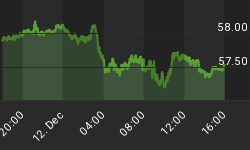The U.S. debt is a problem that nobody wants to face. The U.S. dollar should fall again, despite current equilibrium.
QE3 is still an option.
The labour market could strengthen further in the coming months. It should fuel the economy and stimulate inflation. Eur/usd is oscillating between 1.35 and 1.26. Nonetheless, the medium-term prospective is bearish for the greenback. The deficit is a top priority that nobody wants to face. However, debt has to be paid and the yield of the ten-year Treasuries is pushing higher. So, for Mr. Bernanke, QE3 remains an option. It would contain bond yields and also postpone the solution of the problem. The tail of the crisis is not over yet. In effect, while non-farm payrolls have improved tangibly, the household survey has given more volatile results.
The gap among various regions stays high. The south has shown the strongest rebound lately. At the contrary, the comeback in the north-eastern states has been mild so far. Wages and hours worked are not competitive. Confidence is low. Unemployment could rise again over the longer-term, before eventually collapsing. Debt has improved among households, while student loan debt is at around 6% of the G.D.P. According to the New York Fed, one-in-four students have fallen behind repayments. The strain might continue for few more years, thus eventually limiting the economic growth.
Hungary is under focus again.
Recession is unfolding in Europe. Austerity measures weight on the economy, especially in the southern countries. Greece is saved for now, but problems will surface, once money will run out again. Athens dropping out the euro zone within few years is a realistic possibility. On the other hand, Spain and Italy are working hard in implementing the reforms, but the road stays tortuous. Parties in Italy are battling the new law that will change the labour market regulation for good. The support of most groups is critical for Monti's survival. As the crisis is fading, the E.U. is focusing on other issues.
Hungary, as an example, has already been sanctioned by the E.U. Nevertheless, the country is not following-up with the austerity plan. The fiscal challenge is not the only problem between Budapest and Brussels. In fact, the populistic coalition of Prime Minister Plan has implemented various authoritarian laws to bring the Hungarian society under a firm grip. It has altered the Constitution and changed the electoral system. The government has increased the influence over independent entities such as the central bank and the judicial system. A far-right state in the heart of Europe would set a negative example for other countries.
What will happen to the euro zone is yet to be seen. Nonetheless, the U.S. dollar could increase 40%/50% from the bottom and the trend could last for 5/7 years. The new dollar's cycle should coincide with a top in commodity prices. When will it happen? In the past 80 years, bull trends in commodities continued for 12/13 years before reversing. The last bull-trend began in 2002.
















